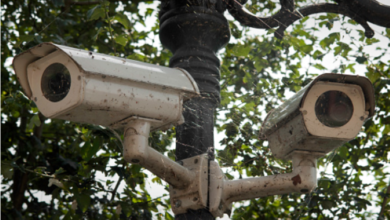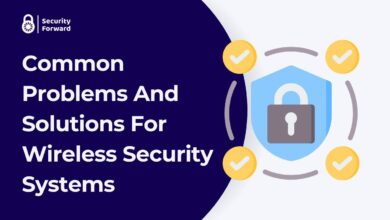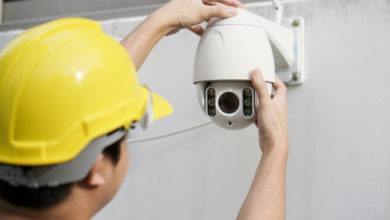Are Smart Homes A Potential Cybersecurity Risk?
KEY TAKEAWAYS
Smart homes are becoming increasingly popular, with people being able to control their home’s features remotely and watch their kids through security cameras. However, these devices can also be vulnerable to cyberattacks.
Researchers have developed a framework that helps users assess their privacy risks associated with their smart home devices. This framework consists of different layers, such as hardware layer attacks, network layer attacks and user layer attacks.
Securing Your Home Network
A large number of smart home devices are interconnected via a wireless network, making them vulnerable to cyber attacks. This means that a criminal can exploit the digital vulnerabilities of one device and gain access to the entire network.
Many smart-home device manufacturers rush their products to market and fail to set adequate cybersecurity standards. This makes their devices vulnerable to laptop-wielding crooks.
To protect your smart home from security threats, ensure that each device has a strong password and that it is updated regularly.
Check the permissions of each app and avoid those that give out broad or universal privileges. Moreover, disable the Universal Plug & Play (UPnP) functionality of your devices as this is often used by hackers to take control over other devices on your network.
Combining network security and cybersecurity gives the best results. Although network security and cybersecurity are often used interchangeably, they are not the same. Think about cybersecurity as the outer layer, and network security as the internal one. Only a strong combination of these two can actually protect your home.
Understanding Cybersecurity Risks Associated with Smart Homes
As technology continues to advance, more and more households are turning to smart home systems to automate their daily lives. These systems offer a range of benefits, including increased convenience, comfort, and energy efficiency.
However, they also come with cybersecurity risks that homeowners need to be aware of.
One of the main cybersecurity risks associated with smart homes is the potential for data breaches. Smart home devices are often connected to the internet, which means that they can be vulnerable to cyber attacks.
Hackers may be able to access sensitive information, such as credit card details, personal contacts, or even home security footage. This can have serious consequences, including identity theft, financial fraud, and invasion of privacy.
Another risk is the possibility of unauthorized access to smart home systems. If hackers are able to gain access to a smart home system, they can potentially take control of various devices, including locks, thermostats, lighting systems, and more.
This can lead to physical security risks, where intruders can gain entry to homes, as well as safety risks, where appliances can be turned on or off without permission.
Finally, there is the risk of devices being compromised by malware. Smart home devices may be infected with malware, which can cause them to malfunction or become damaged. Malware can also be used to control devices remotely, leading to further security risks.
To protect against these cybersecurity risks, homeowners should take precautions such as using strong passwords, keeping software up to date, and avoiding suspicious emails or links.
It is also important to research smart home devices before purchase and to consider the reputation of the manufacturer in terms of cybersecurity. By taking these steps, homeowners can enjoy the benefits of smart home systems while minimizing the risks associated with them.
Leveraging Strong Password Security Protocols
As smart home technology continues to evolve, it is becoming increasingly important for homeowners to prioritize strong password security protocols in order to protect their devices and data from cyber threats.
Strong passwords are the first line of defense against cyber attacks, as they make it more difficult for hackers to gain unauthorized access to smart home systems.
One of the most important aspects of strong password security is using complex, unique passwords for each device and account. This means avoiding common passwords like “123456” or “password,” as well as using different passwords for different accounts. Passwords should be changed regularly to help prevent unauthorized access.
Use of two-factor authentication. Two-factor authentication adds an extra layer of security by requiring users to provide a second form of identification beyond a password, such as a fingerprint or code sent to a mobile phone. This can help to prevent unauthorized access even if a password is compromised.
Avoid sharing passwords or leaving them written down where they can be easily accessed by others. Instead, passwords should be stored securely using a password manager or other secure tool.
Stay up to date with the latest cybersecurity threats and best practices for password security. This includes monitoring device and account activity, keeping software up to date, and being aware of common phishing scams and other cyber attacks.
By leveraging strong password security protocols in smart homes, homeowners can enjoy the benefits of increased convenience and automation while also protecting their devices and data from cyber threats.
Taking Advantage of Automated Security
Smart home technology offers a range of benefits, including increased convenience, remote monitoring capabilities, and improved security.
One of the main advantages of automated security in smart homes is the ability to monitor home security remotely. With a smart home security system, homeowners can use their smartphones or other devices to monitor their home security system from anywhere in the world.
This means that they can check on their home and receive alerts if there is any suspicious activity, even when they are not physically present.
Then the ability to automate security features such as locks, alarms, and cameras. Automated security systems can be programmed to activate or deactivate certain features at specific times of day or in response to certain triggers, such as motion detection or entry attempts.
This means that homeowners can enjoy increased security without having to manually engage security features every time they leave or enter their home.
Automated security systems can also provide increased peace of mind for homeowners, especially those who travel frequently or are away from their home for extended periods of time.
Knowing that their home is being monitored and protected by an automated system can help to alleviate concerns about physical security threats.
Automated security systems can potentially deter burglars and other intruders. The presence of visible security cameras or alarms can make a home less attractive to potential intruders, as they may be more likely to move on to a less secure target.
By taking advantage of automated security features in smart homes, homeowners can enjoy increased convenience, peace of mind, and security. However, it is important to remember that automated security systems should be used in conjunction with other physical security measures to fully protect a home from potential threats.
Endnote
Smart homes have become increasingly popular in recent years, with homeowners using connected devices and systems to automate their daily lives.
While smart homes offer numerous benefits, such as increased convenience and energy efficiency, there are also potential cybersecurity risks associated with them.
Smart home systems are often connected to the internet, which means that they can be vulnerable to cyber attacks.
If hacked, smart home devices can provide access to sensitive information, such as personal contacts, credit card details, and even home security footage. They can be compromised, allowing hackers to take control of various devices, including locks, thermostats, lighting systems, and more.
This can lead to physical security risks, where intruders can gain entry to homes, as well as safety risks, where appliances can be turned on or off without permission.
As the number of connected devices in smart homes continues to grow, it is important for homeowners to prioritize strong cybersecurity measures to protect against potential cyber threats.




